The economy of French Polynesia is one of a developed country with a service sector accounting for 75%. French Polynesia's GDP per capita is around $22,000, one of the highest in the Pacific region.
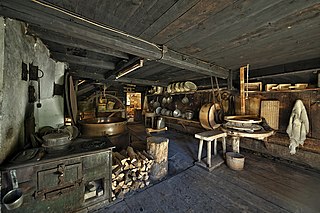
A dairy is a business enterprise established for the harvesting or processing of animal milk – mostly from cows or buffaloes, but also from goats, sheep, horses, or camels – for human consumption. A dairy is typically located on a dedicated dairy farm or in a section of a multi-purpose farm that is concerned with the harvesting of milk.

Kings County is a county in the U.S. state of California. The population was 152,982 at the 2010 census. The California Department of Finance estimated the county's population was 152,940 as of July 1, 2019. The county seat is Hanford.

The Common Agricultural Policy (CAP) is the agricultural policy of the European Union. It implements a system of agricultural subsidies and other programmes. It was introduced in 1962 and has undergone several changes since then to reduce the cost and to also consider rural development in its aims. It has been criticised on the grounds of its cost, and its environmental and humanitarian impacts.

The Jersey is a British breed of small dairy cattle from Jersey, in the British Channel Islands. It is one of three Channel Island cattle breeds, the others being the Alderney – now extinct – and the Guernsey. It is highly productive – cows may give over 10 times their own weight in milk per lactation; the milk is high in butterfat and has a characteristic yellowish tinge.

Buttermilk is a fermented dairy drink. Traditionally, it was the liquid left behind after churning butter out of cultured cream; most modern buttermilk is cultured, however. It is common in warm climates where unrefrigerated fresh milk sours quickly.

A cash crop or profit crop is an agricultural crop which is grown to sell for profit. It is typically purchased by parties separate from a farm. The term is used to differentiate marketed crops from subsistence crops, which are those fed to the producer's own livestock or grown as food for the producer's family. In earlier times cash crops were usually only a small part of a farm's total yield, while today, especially in developed countries, almost all crops are mainly grown for revenue. In the least developed countries, cash crops are usually crops which attract demand in more developed nations, and hence have some export value.

The Chicago Mercantile Exchange (CME) is a global derivatives marketplace based in Chicago and located at 20 S. Wacker Drive. The CME was founded in 1898 as the Chicago Butter and Egg Board, an agricultural commodities exchange. Originally, the exchange was a non-profit organization. The Merc demutualized in November 2000, went public in December 2002, and merged with the Chicago Board of Trade in July 2007 to become a designated contract market of the CME Group Inc., which operates both markets. The chairman and chief executive officer of CME Group is Terrence A. Duffy, Bryan Durkin is president. On August 18, 2008, shareholders approved a merger with the New York Mercantile Exchange (NYMEX) and COMEX. CME, CBOT, NYMEX, and COMEX are now markets owned by CME Group. After the merger, the value of the CME quadrupled in a two-year span, with a market cap of over $25 billion.
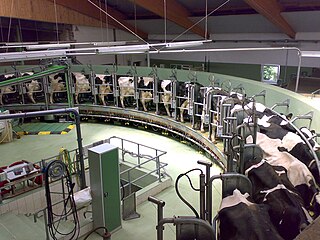
Dairy farming is a class of agriculture for long-term production of milk, which is processed for eventual sale of a dairy product.
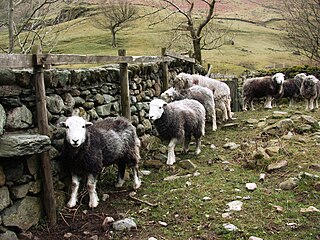
Extensive farming or extensive agriculture is an agricultural production system that uses small inputs of labor, fertilizers, and capital, relative to the land area being farmed.
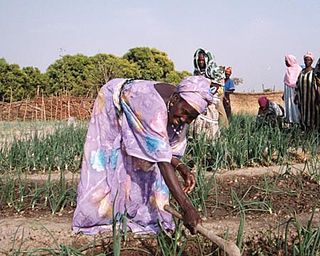
An agricultural cooperative, also known as a farmers' co-op, is a cooperative where farmers pool their resources in certain areas of activity. A broad typology of agricultural cooperatives distinguishes between 'agricultural service cooperatives', which provide various services to their individually farming members, and 'agricultural production cooperatives', where production resources are pooled and members farm jointly. Examples of agricultural production cooperatives include collective farms in former socialist countries, the kibbutzim in Israel, collectively governed community shared agriculture, Longo Mai co-operatives and Nicaraguan production co-operatives.

Government cheese is processed cheese provided to welfare beneficiaries, Food Stamp recipients, and the elderly receiving Social Security in the United States, as well as to food banks. This processed cheese was used in military kitchens during World War II and has been used in schools since the 1950s.
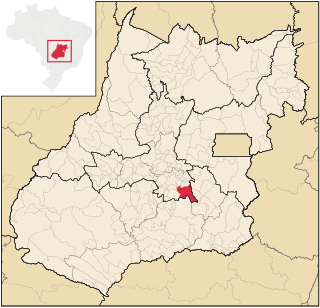
Bela Vista de Goiás is a city located in central Goiás state in Brazil.

The Federal Agriculture Improvement and Reform Act of 1996, known informally as the Freedom to Farm Act, the FAIR Act, or the 1996 U.S. Farm Bill, was the omnibus 1996 farm bill that, among other provisions, revises and simplifies direct payment programs for crops and eliminates milk price supports through direct government purchases.

Open education is education without academic admission requirements and is typically offered online. Open education broadens access to the learning and training traditionally offered through formal education systems. The qualifier "open" refers to the elimination of barriers that can preclude both opportunities and recognition for participation in institution-based learning. One aspect of openness or "opening up" education is the development and adoption of open educational resources.
Classified pricing is the pricing system of federal milk marketing orders, under which milk processors pay into a pool for fluid grade milk. The price that processors have to pay into the pool is based on how the milk ultimately is used. Milk used for fluid (Class I) consumption generally receives the highest price and lower minimum prices are paid for the three classes of milk used for manufactured dairy products: Class II, Class III (cheese), and Class IV.
Marketing orders and agreements in United States agricultural policy allow producers to promote orderly marketing through collectively influencing the supply, demand, or price of a particular commodity. Research and promotion can be financed with pooled funds.
The United Soybean Board (USB), is the governing body that instantiates the U.S. commodity checkoff program for soybeans It is made up of 73 volunteer farmer-directors who oversee the investments of the soybean checkoff on behalf of all U.S. soybean farmers. The soybean checkoff is a congressionally-mandated assessment on soybeans, whose proceeds are used to fund soybean research and promotion efforts. The checkoff is managed by the United Soybean Board under the supervision of the United States Department of Agriculture Agricultural Marketing Service. In 2014, the checkoff was $109.1 million.
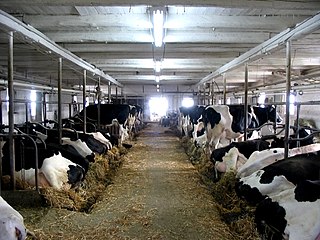
Dairy farming is one of the largest agricultural sectors in Canada. Dairy has a significant presence in all of the provinces and is one of the top two agricultural commodities in seven out of ten provinces.

Supply management (SM) is a national agricultural policy framework used in Canada that controls the supply of dairy, poultry and eggs through production and import controls and pricing mechanisms designed to ensure that these farms can be profitable and Canadian consumers have access to a high-quality, secure supply of these sensitive products at stable prices without shortages and surpluses.














